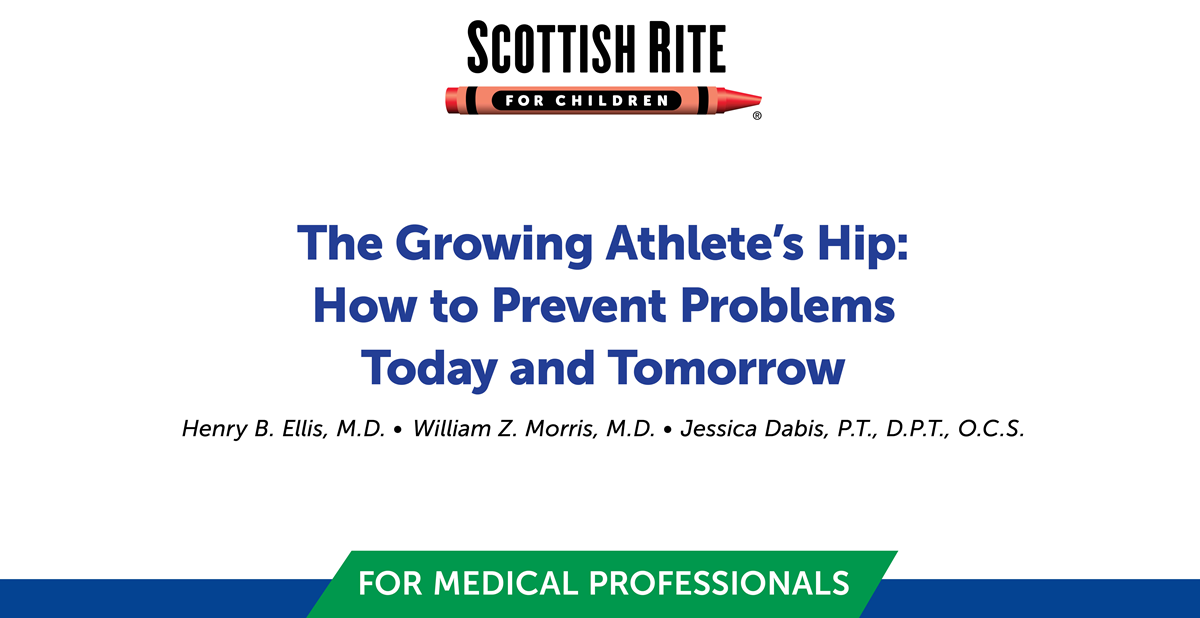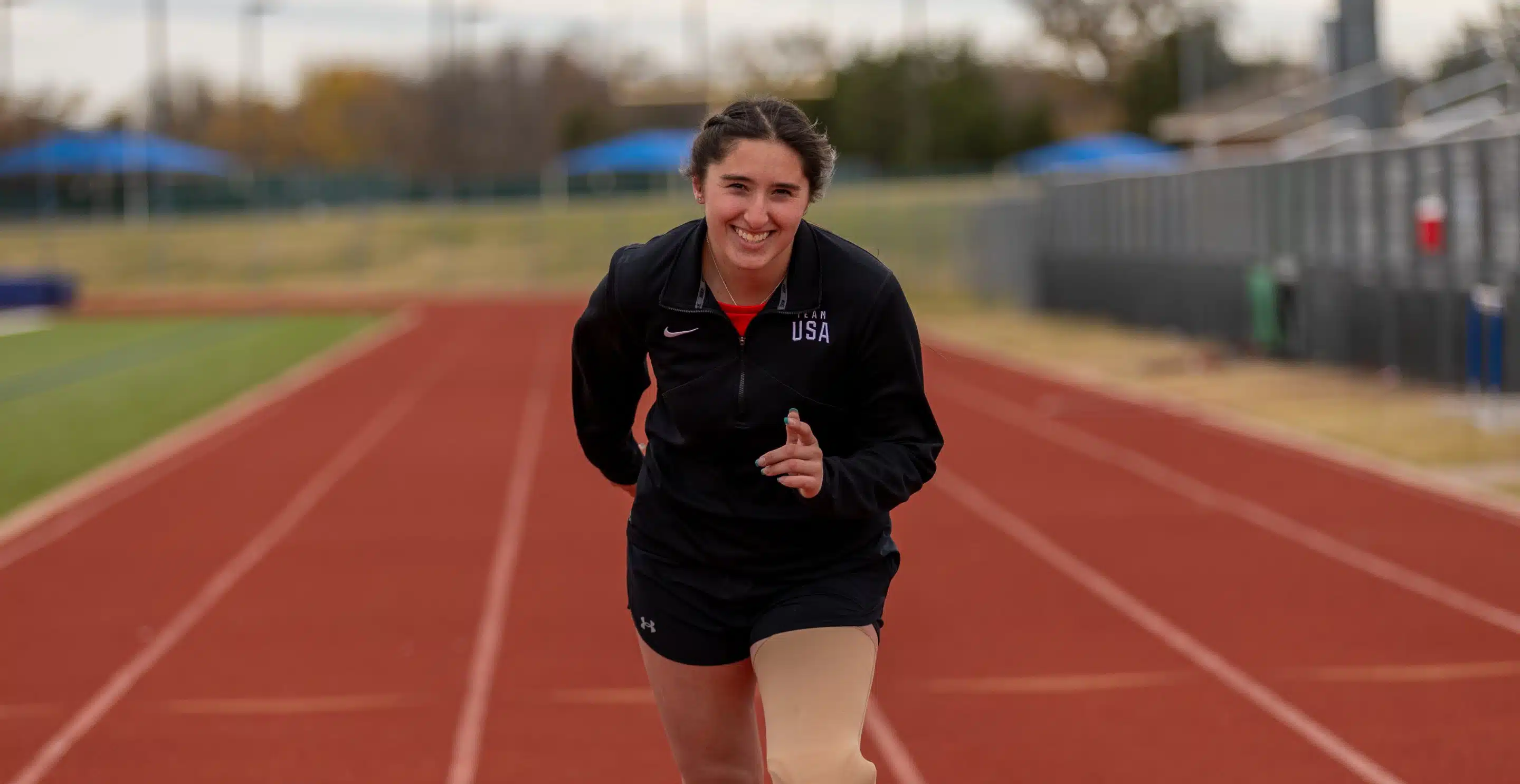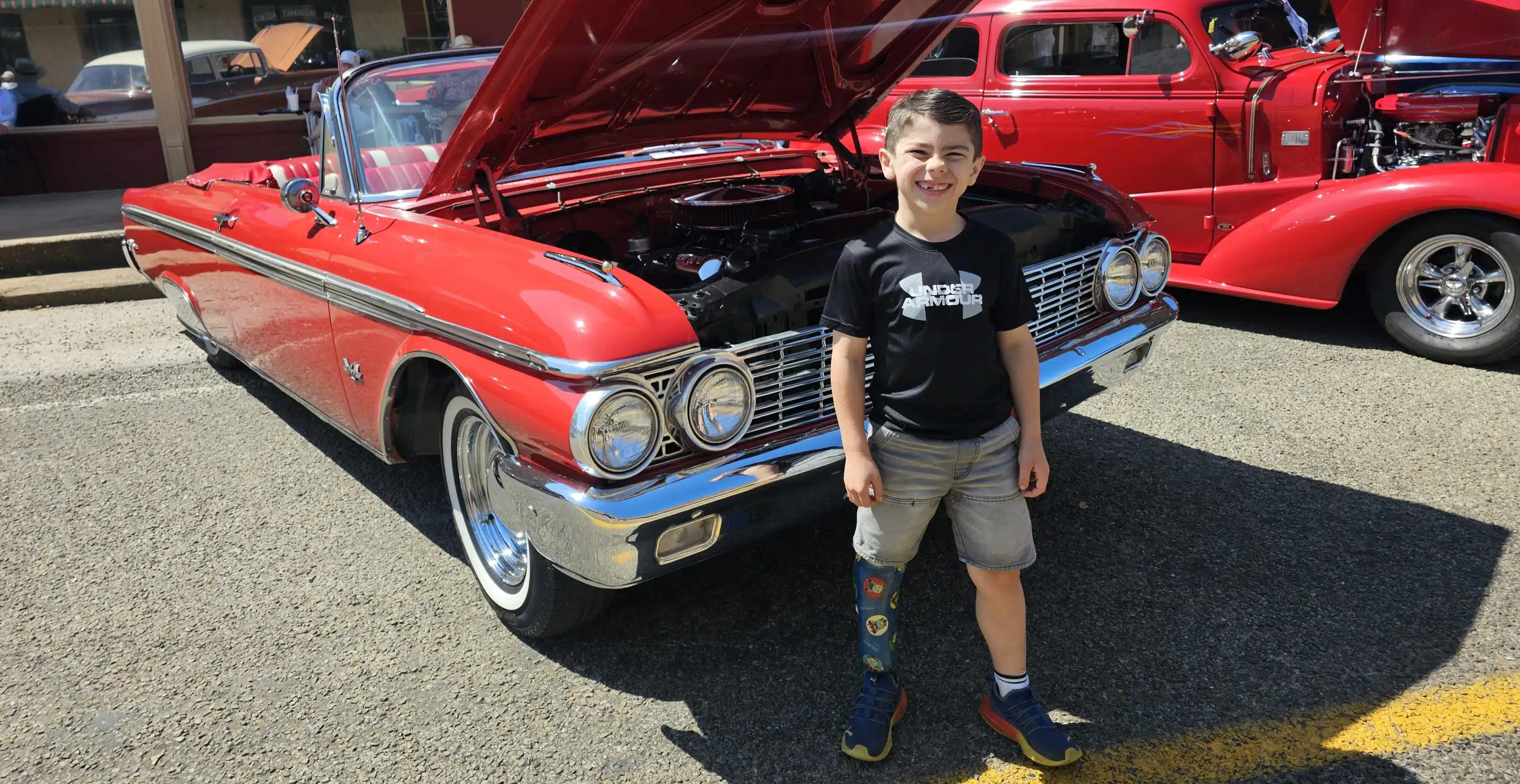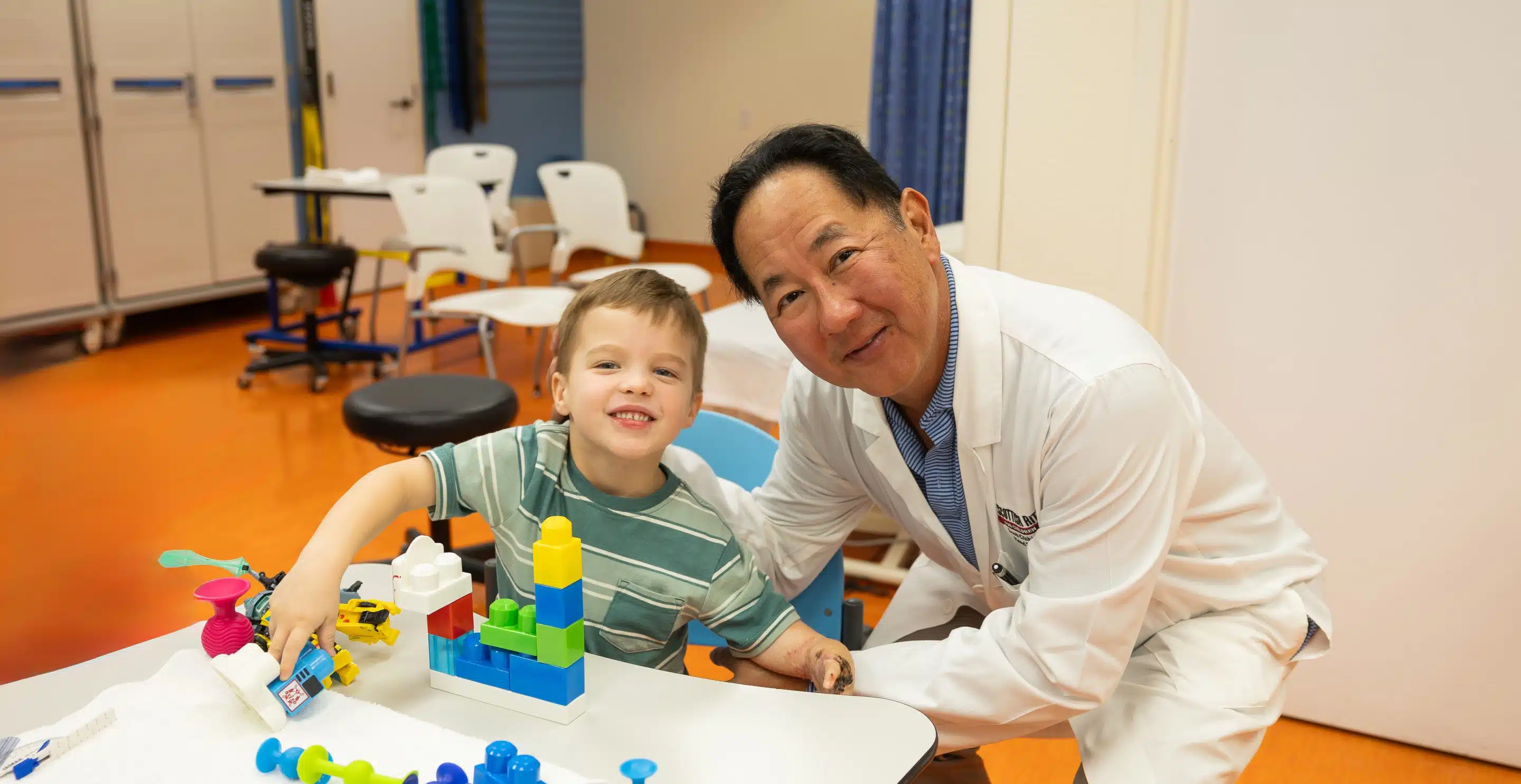Download a PDF of this summary.
In this program, our pediatric orthopedic and sports medicine experts described how the skeletal development of the hip is affected by repetitive and extreme movements inherent to athletic activity. The changes, in some cases, can be permanent. Keep reading to learn what we know about preventing irreversible changes and treating symptoms of these sport-related hip conditions.
Apophysitis and Apophyseal Fractures in the Hip and Pelvis
Apophysis is a normal bony outgrowth that arises from secondary ossification centers. The bone fragment will ultimately fuse with the primary bone. The apophysis contributes more to the shape of a bone than the longitudinal growth. Until the ossification center fuses, also referred to as the point at which the “growth plate closes,” the tendon or ligament attached to the apophysis can pull and cause pain in the soft cartilage in the apophysis.
Hip and pelvic apophyses that are vulnerable to acute or overuse injuries are located at the ischial tuberosity, the iliac crest, the anterior superior iliac spine (ASIS) and anterior inferior iliac spine (AIIS). An apophyseal avulsion fracture. An anterior-posterior view of the pelvis is helpful when evaluating complaints in the pelvis so contralateral comparison can be made.
Risk factors for injury includes:
- Tight muscles and muscle groups
- Early in the sports season
- Change in activity from sedentary to active
- Sudden increase in intensity or duration of training or competition
- Ignoring activity-related pain
- Minimal recovery from workouts
- Year-round training
- Lack of cross-training
- Overtraining
Treatment for these conditions is most often nonoperative and is centered around protecting the area involved. Rest, protected weight-bearing, gentle passive ROM and gradual return to play are necessary elements of the plan. Healing and symptom resolution may take 12 weeks or more and radiographic healing is not required prior to returning to sports.
Internal and External Snapping Hip
Athletes may report “popping” in the hip.
If you can see it, it’s likely coxa sultans externus, external snapping hip. This is a condition of the iliotibial band popping over the greater trochanter on the lateral side of the femur. Runners may complain of this when running or walking, and they may describe that it “pops in and out.”
If you can hear it, it’s likely coxa sultans internus, internal snapping hip. This occurs when the iliopsoas muscle, deep in the groin, causes painful popping. This condition is often seen in dancers and tumblers. Treatment includes hip flexor stretching and activity modification.
Femoroacetabular Impingement (FAI)
An overuse injury seen in adolescent and young adult athletes in the hip can be caused by changes in the shape of the femoral head-neck junction (Cam-type) or the acetabulum (Pincer-type). These changes can cause pinching and tearing of the labrum, the soft tissue surrounding the acetabulum that acts to deepen the socket. Early injury from impingement can cause premature hip arthritis. Therefore, this condition is continuing to get more attention with the goal to prevent deformity and consequences.
How does a Cam-type deformity develop?
The femoral head collides prematurely with the acetabulum. The impact causes a change in the shape of the head from being spherical to being more “cam” shaped, or oblong. These may develop secondary to another medical condition in the developing hip, such as:
- Slipped capital femoral epiphysis (SCFE) is seen in approximately one in 10,000 may occur and result in avascular necrosis of the femoral head.
- Perthes disease – rare condition affecting blood flow in the hip and causes deformity.
- Trauma or fracture
In athletes, there is not a primary condition like those listed above. Therefore, idiopathic Cam deformities have been identified in teenage athletes who participate in soccer and other sports. Younger players studied do not show this condition, so the window of opportunity and the exacerbating activity are being studied more closely. Shearing forces may be occurring at the physis to protect the bone, but ultimately may be causing changes in the growth plate and therefore the shape of the femoral head.
Can this be prevented?
Early conversations are looking at the parallel occurrence in the shoulder and elbow in baseball players. Evaluation of the dosage of activity, such as pitch counts in baseball, have been implemented to preserve the anatomy and improve performance in elite athletes. For now, working on proper mechanics and activity modification in adolescence may be our best tools to prevent this deformity.
Considerations and Components of a Hip Injury Prevention Program
Factors that must be considered to prevent hip injuries in adolescent athletes include:
- Open growth plates
- Peak height velocity (PHV)
- High volume of training particularly with loading in rotational and axial movements
- Sport-specific end range of motion demands
- Explosive and eccentric demands
Modifiable factors may include:
- Muscle imbalances
- Muscle weakness
- Inflexibility
- Poor technique
- Sport-acquired deficiencies
- Joint instability
- Overtraining
Five Domains of Injury Prevention Strategies of the Hip
- Training Load Management
Higher incidence of athletic hip pain found with athletes who specialize in a single sport before high school and participate in regular training at earlier ages and four times per week before the age of 12. Recommendations include sampling a variety of sports rather than specializing, monitoring workload, neuromuscular training programs and taking rest breaks from sport (two to three nonconsecutive months/year). - Hip Mobility During Rapid Growth
Through stretching, dynamic warm-up and eccentric training, hip tissues can stay flexible. Progression of eccentric training can improve the length-tension curve to improve performance and resist injuries. - Motor Control and Stability
Hypermobility and poor motor control need to be addressed with strategies that improve core stability and teach foundational movement patterns for sport-related movements, such as jumping and landing. - Strength to Improve Imbalances & Specificity
Once mobility and control are addressed, strengthening can occur. Eccentric adductor & abductor strength can be improved by combining activities, such as the Copenhagen plank and a Nordic Hamstring exercise. Looking for sport-specific strengthening tasks. - Sport-Specific Movement Mechanics
The culmination of these strategies is executing the sport-specific movement patterns with all of the fundamental movement competence and technical accuracy to ensure safety. Whether the sport demands jumping and landing on a court, changing direction at high speeds on the ice or holding extreme postures on a balance beam, the steps follow a standard pattern.
Implementing Hip Injury Prevention Programs
With confidence that many of these elements are modifiable due to neural plasticity of youth athletes before and during growth, making an effort to prevent injuries is appropriate. Research will continue to define the right and wrong approaches; however, we have some tips that are generally accepted. To avoid detraining, it is recommended to perform activities two to three times per week, approximately 20 min duration, up to 60 min for at least six weeks. It is important to implement it prior to the beginning of a season. Qualified instructors and supervision for continued implementation of the proper techniques are crucial elements of a safe and successful program.
Learn more about hip health in dancers.
This is a summary of a presentation in a monthly series for medical professionals called Coffee, Kids and Sports Medicine. Through events like these, Scottish Rite for Children experts share their experience and knowledge with others to ensure young and growing athletes are getting the best care in every environment.














